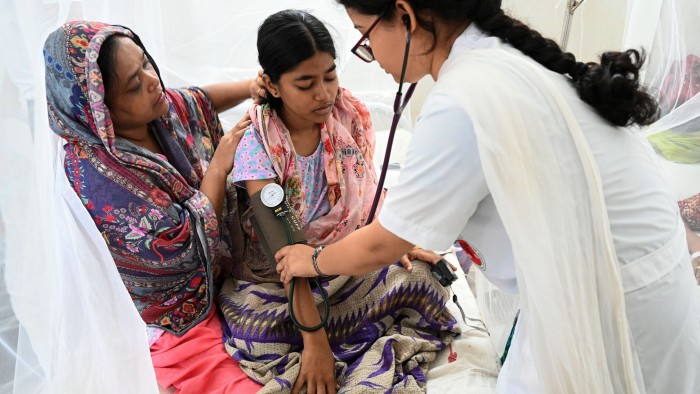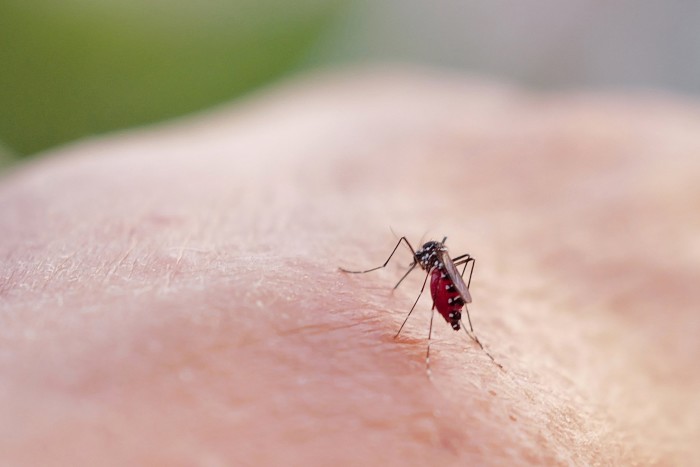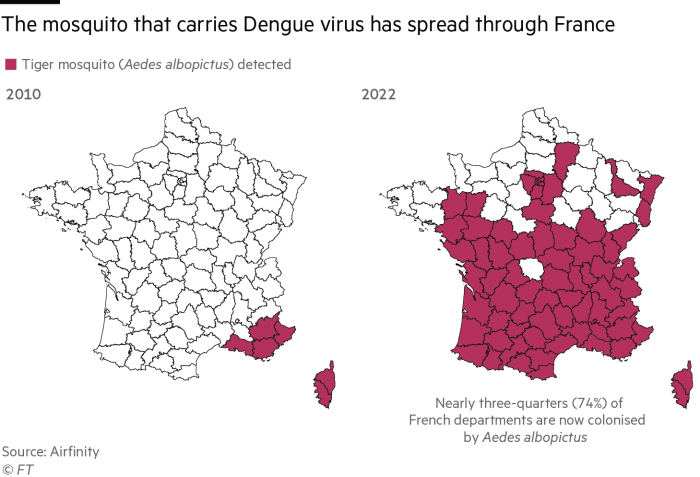El Niño and a hotter, wetter climate aid spread of disease

Simply sign up to the Climate change myFT Digest -- delivered directly to your inbox.
Climate change and the El Niño ocean warming effect are raising new concerns over public health around the world, as hotter and wetter weather helps the spread of infectious diseases.
This summer in the northern hemisphere was by far the warmest on record and the arrival of El Niño — in which the surface of the eastern equatorial Pacific Ocean heats up and causes global changes in temperature and rainfall — has focused experts’ attention on the health impacts of a volatile climate.
Some 58 per cent of all infectious diseases encountered by humans can be aggravated by climate change, according to a recent review by researchers at the University of Hawaii in the journal Nature Climate Change. They said it was necessary to cut the emissions causing climate change rather than adapt to the health consequences because there were more than 1,000 pathways in which climate hazards cause disease.
“As our climate continues to change, adverse weather events are becoming more common and more intense, thereby creating conditions that are favourable for the spread of disease,” explains Richard Gleave, director of scientific strategy and development at the UK Health Security Agency (UKHSA).

Past El Niño events have been linked to increased incidence of malaria in Venezuela and Brazil, dengue fever in the Pacific Islands, and cholera in South India and Bangladesh.
Vectors — organisms that host and transmit infections — include mosquitoes and ticks, which can spread illnesses such as malaria, dengue fever and Lyme disease. “When we look at vector-borne disease, we can see from previous El Niños, particularly the 2015-16 El Niño, that we get increases in outbreaks of a wide range of vector-borne and other infectious diseases,” says Madeleine Thomson, head of climate impacts and adaptation at Wellcome, the medical charity.
Higher temperatures mean there are more areas in which vectors can survive and breed; it also means they bite more often and for longer, which makes it more likely that a disease is transmitted, as well as ensuring mosquitoes mature more quickly.
Severe flooding has been linked with outbreaks of dengue fever in countries including Pakistan and Bangladesh. In Bangladesh, there have been 135,000 dengue cases so far this year and more than 600 related deaths, the Directorate General of Health Services reports, exceeding the record for 2022. This has coincided with unusual weather that has increased the mosquito population, the WHO said last month. It warned the country’s climate was “becoming more favourable” for transmission of disease.
Mosquito-borne diseases are also rising across Europe. The tiger mosquito, the main vector for dengue fever in Europe, has spread across France in recent years, according to Airfinity. There were 65 locally acquired dengue cases in France last year, compared with 48 in the previous 12 years combined.

“We need to be prepared for the health consequences of climate change,” says Maria Neira, director of the public health and environment department at WHO. “Climate change is affecting our health — we need to react accordingly in a more ambitious way.”
Disease can also spread through water — especially when flooding results in contamination of drinking water. Waterborne diseases account for 1.8mn deaths per year worldwide, the US National Institutes of Health says.
Cholera, which causes severe diarrhoea, spreads through contaminated food and water, including when storms, floods and drought disrupt the supply of clean water and sanitation. Fifty per cent more countries than the normal yearly average reported cholera outbreaks in 2022, the fifth hottest year on record, according to the WHO. Other diseases that spread through water include norovirus, E.coli and salmonella.
A less obvious factor in the spread of disease is the rising use of air conditioning. This requires doors and windows to be closed, removing natural ventilation and making it easier for airborne infections to spread. Warmer, drier summers can also increase soil evaporation and promote the release of dust into the atmosphere, an important pathway for transporting pathogens such as fungus and bacteria.
The WHO is promoting the concept of “One Health” — the notion that human, animal and environmental health are linked. Public policy that incorporates this is recommended in order to understand the effect that climate change has on disease acquired from animals, antibiotic resistance, and food safety, a UK parliament research paper said in July.
“Looking at the interaction between human health, animal health, environmental health and the environment, is one of the best things we can do,” says Neira. “If we mitigate climate change, the health benefits will be enormous.”
Climate Capital

Where climate change meets business, markets and politics. Explore the FT’s coverage here.
Are you curious about the FT’s environmental sustainability commitments? Find out more about our science-based targets here

Comments